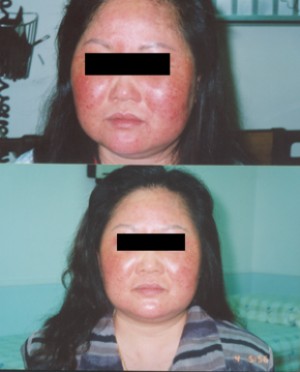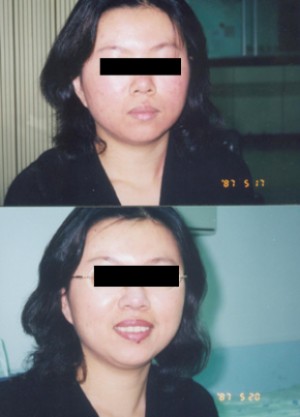

In the 1990s, ETS surgery became a very popular choice for treating facial blushing. Just as for hand sweating, the second thoracic ganglion was cut or cauterized or clipped in treating facial blushing. There were some minor differences regarding where T-2 was cut for hand sweating versus for facial blushing. I think that for facial blushing, the cut was slightly closer to T-1, implying much greater chances for side effects such as Horner's Syndrome. If someone wanted to get rid of both hand and facial sweating, the cut was in the same place as for facial blushing. I have not done much research on this difference in technique since I never suffered from facial blushing. Of course most surgeons today cut T-3 or T-4 for hand sweating problems, so the comparison is no longer relevant anyway.
Moreover, since the early 2000s, an increasing number of ETS surgeons have been refusing to treat facial blushing with surgery. High rates of symptom re-occurrence and high rates of compensatory sweating made too many facial blushing patients regret having ETS surgery. When I went to Sweden for my own ETS surgery in 1998, there were several other patients over there who I talked to that had come for a re-operation for facial blushing recurrence.
Although I have read a lot of negative testimonials from people who had ETS for facial blushing (many of whom joined the FFSO group in Sweden and another similar group in Taiwan), there are also many satisfied former blushers who had a successful ETS surgery. A must read is Philip's excellent summary of his ETS surgery to cure facial blushing and facial sweating. Anxiety seems to be a much greater cause of symptoms for blushers in comparison to those who suffer from only palmar hyperhidrosis. Philip discusses his use of XANAX to curtail anxiety prior to getting ETS surgery.
Some facial blushing before and after ETS surgery pictures from Dr. Lin's old website: |
 |
A 20 year old student by the name of Brandon Thomas ended his own life in 2012 due to years of trying to cope with severe levels of facial blushing. His story can be found in various online newspapers, including here and here. Over the years, I have also read of several other cases where people committed suicide due to excessive facial blushing and related anxiety.
Beta blockers are drugs that block the effect of adrenaline (also known as the hormone epinephrine) on the body's beta receptors. After you take a beta blocker, your heart beats more slowly and your blood pressure drops. Beta blockers also improve blood flow via opening up blood vessels, and they can block the impulses that cause an irregular heartbeat. The most well known beta blocker is probably propranolol. Because beta blockers can often reduce anxiety, they are helpful in reducing facial blushing. Although rarely severe, side effects from taking beta blockers include fatigue, cold hands, headaches, digestive disorders, sleep disorders, drowsiness and nausea.
Cognitive Behavioral Therapy (CBT) is a popular psychotherapy treatment method that is used to treat problems ranging from anxiety and mood disorders, to eating disorders and substance abuse. CBT can also help with blushing, by enabling one to control his/her reaction to troublesome or embarrassing situations. It should be emphasized that this kind of treatment will only help with erythrophobia, a form of blushing linked to anxiety, social phobia, and an irrational fear and self consciousness related to one's blushing. Rosacea (a chronic skin condition that leads to blushing) and menopause or medication related blushing/flushing are generally not treated with CBT.
For more firsthand information, visit the facial blushing forum on this site.